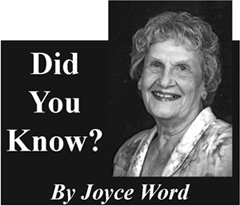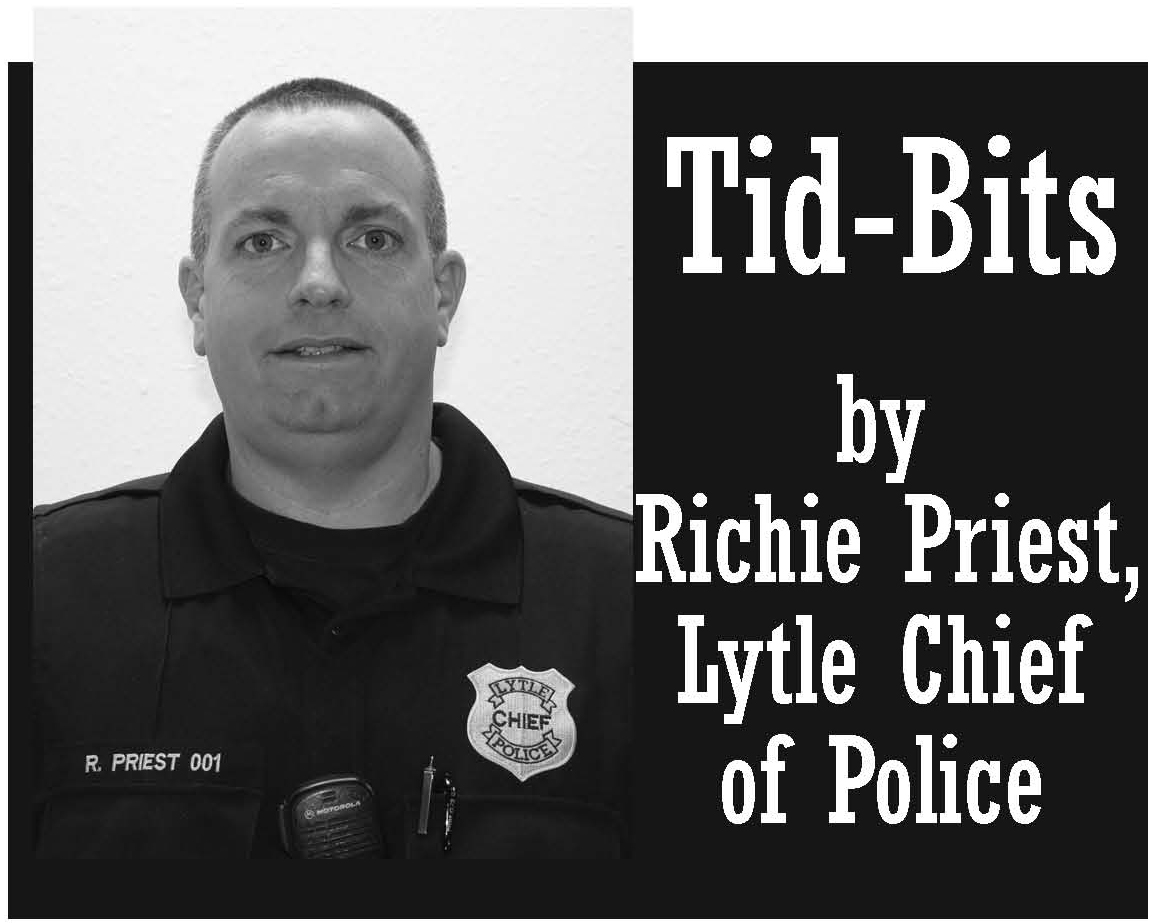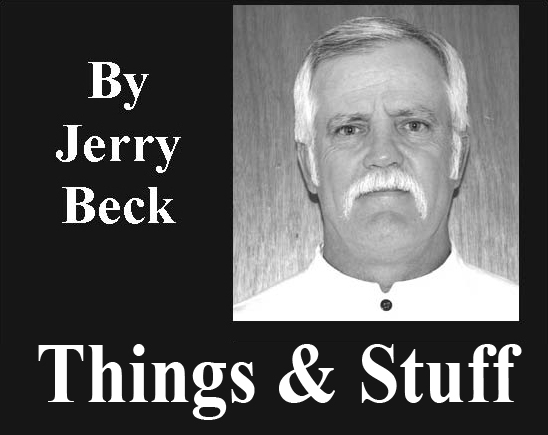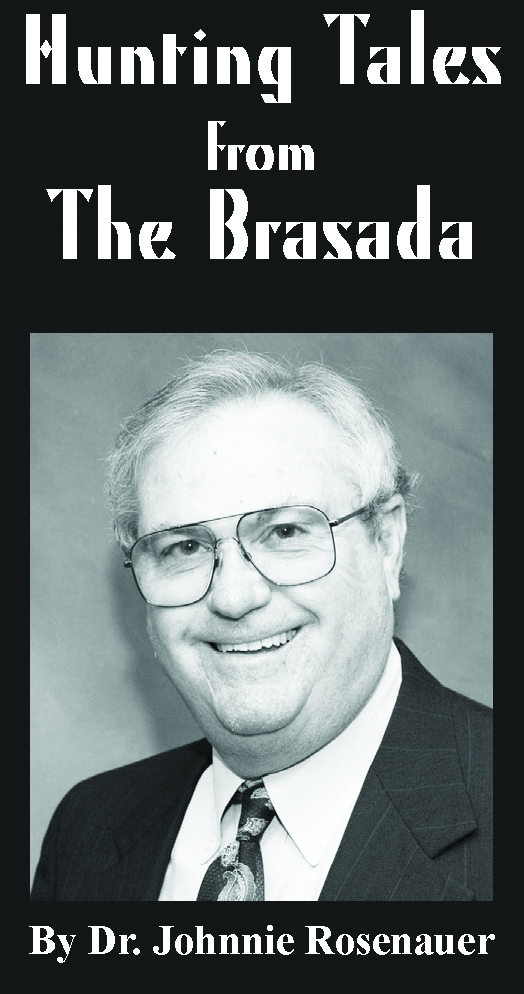In checking the dates of things I need to do in the near future, it dawned on me that we only have seven more days from today in this month! July has gone by like a whirlwind as far as I’m concerned, and I’m quite sure a lot of teachers will agree with me! In some areas, school will be starting on August 1, for teachers
This past week I’ve attended two funerals; the first one was for a very dear friend. Most of you have heard about taking care of a friend’s dog when she was out of town. This week she succumbed to cancer to the sorrow of her family and her family of friends. May she rest in peace. The second funeral was a truly sweet lady from our church. She was always willing to help with any church work, pleasant to be around totally easy to work with at our church picnic. She had car trouble and while she was out of her car was critically injured by a hit and run driver. She did not survive her injuries and leaves behind a large family and a host of friends. May she rest in peace. However, I did have some fun this week; my daughter came by on her way home, after spending several days helping out her son and his family who welcomed a precious baby boy! We had a great time not only visiting and playing table games but squeezed in a shopping trip as well. She made it home fine this afternoon, to find the streets flooded and rain pouring down. We’re all thankful she had no problems.
Category: Commentary
Tid-Bits
Last week at Lytle P.D. … Officers managed 65 service calls and conducted 35 traffic stops. Of those 35 stops, 18 resulted in citations and 17 were warnings.
We responded to a wide range of property crime reports this past week, in all, there were 6 reports taken. #1 – A construction company working at Rosewood Estates reported that diesel was stolen from their equipment. #2 – A property owner in the 200 Blk. of CR 6841 reported that a rear window of a residence had been broken out. #3 – A 1999 Ford Ranger was stolen from a residence on Cortez Rd. It was recovered by the Medina Co. Sheriff’s Office in the Twin Lakes Subdivision. #4 – A 2016 Kia Soul was reported stolen from Cortez Rd. It too, was recovered in the Twin Lakes Subdivision. It was recovered by the Medina Co. Sheriff’s Office in the Twin Lakes Subdivision. Our investigation leads us to believe that those responsible for both vehicle thefts are a small group of young people (possibly juveniles). The Kia was seen with three males and one female driving recklessly in Twin Lakes right after the theft. Both vehicles were used for “joy riding” and were left abandoned. #5 – O’Reilly’s Auto Parts reported a person used fraud to steal $434 worth of product.
Things & Stuff
Been a little warm lately but, there is a chance for some rain so, keep prayin. We missed the hurricane remnants cause we were in Florida watching it on TV. The eye passed over Jason and Nickie’s house in Magnolia, Texas and they got another foot of rain.
Everybody has seen the assassination attempt on Trump so I ain’t gonna dwell on it except to say that as a Sniper for the SAPD SWAT team for 4 years, I have lotsa questions and I’ll leave it at that….and so far, even after news reports and Congressional Hearings, they ain’t been answered.
By the time this comes out, we would have already had our MCRP meeting and discussed the upcoming elections and our role in them. Noticed that at the National Convention, unity and strength were highlighted. This starts at the local level.
Blood Pressure, Blood Pressure, Blood Pressure!
Here are the facts. Nearly half of U.S. adults have high blood pressure and about half of those don’t have it under control. Many don’t know they have it and don’t know the damage it is silently causing, and so it gets its name, the silent killer. Family history, race, gender or kidney disease can play a role in our risk factors, and just getting older increases our risk. High blood pressure can contribute to our risk of stroke, heart failure, heart attack, vision loss, kidney disease, sexual dysfunction and plaque buildup in the arteries. It’s also a factor for dementia and Alzheimer’s disease, the most common cause of dementia. Alzheimer’s disease is one of the leading causes of disability and poor health in the US. It is predicted that by 2060 the number of Americans living with Alzheimer’s will double!
Continue reading “Blood Pressure, Blood Pressure, Blood Pressure!”
A Dad and Daughter Road Trip – Part 2
“To a father growing old, nothing is dearer than a daughter.”Euripides
As mentioned last week in part 1 – what follows is a continuing account of a dad and daughter road trip taken a few years ago with my youngest daughter Marigrace (MG). Our adventure started when we decided to drive from Texas to Chicago to see a ball game.
Our Friday night game at Wrigley Field was thrilling (Cubs beat the dastardly Giants 5-4). The next day our game time was 1:30 p.m., which gave us time to enjoy Chicago style stuffed pizza for lunch (Giordano’s – 1040 W. Belmont Ave. – best pizza on planet Earth!). Our afternoon game was terrific. Wrigley Field was as glorious as ever. And the Cubs spanked the Giants 5-1. Great game! Be advised, if you ever visit Wrigley, parking is scarce, so come prepared to pay. Located in the Lakeview Community of North Chicago, Wrigley Field has no parking lot. Fans must park on the street, in small private lots, or behind private homes.
Reluctant to leave Chicago without taking in a few more sights, the next day we headed towards Lake Michigan for a visit to the Field Museum. This is well worth seeing (amazing exhibits everywhere you turn) but cost to get in is obscene.
Next door is the Shedd Aquarium. If you like fish, this is a winner. We ended our afternoon visit by enjoying a hotdog on the shore of Lake Michigan. Cold, with a little rain, but this was a nice way to end our time in Chicago.
Next, we drove west through the afternoon to visit family in Newton, Iowa (my wife’s grandmother grew up on a farm in Newton). There we met “Cousin George,” his wife and sister, and several other family members for the first time. Iowa was beautiful, with rolling farmland (they grow mostly corn and soybeans) as far as you could see. The highlight of this stop, other than meeting family that we had never met before, was a visit to the old family farm, and specifically, a visit to the old family barn (over 130 years old and still standing strong). The old rope swing that Gramma Mac (or Dorothy Dodge, as she was known then), MG’s great grandmother, played on is still there.
We also visited the local cemetery, where Joel Dodge (MG’s great-great grandfather) was buried, along with his three wives. Note – he was not a bigamist. He only liked being married, so when his first wife died, he married again. Then when his second wife died, he married a third time. Just want you to know the truth. Joel Dodge was a Civil War veteran (fighting on the side of the North). He was an artilleryman, and was wounded in action at Corinth, Mississippi in 1862. He lost two fingers on one hand and carried a Minie ball in his knee (some family members say his hip) for most of his life, until it was cut out on the kitchen table of his farmhouse some years later.
I must say that the whole Dodge family seemed like a pretty tough, and entertaining bunch, especially MG’s great grandmother Dorothy. Her descendants are still talking about her exploits, as if they happened only yesterday. Like the time Dorothy (or Todd as she was called by her college friends – a name she acquired because of her skill performing the “Toddle Dance” – a big thing on college campuses in the 1920s) and her friend Biggie showed up for a visit to the Iowa farm late one night. Someone noticed a single light weaving down the road towards their farmhouse. Upon closer investigation, they realized it was Dorothy and Biggie in their battered Model T. Their headlights were not working, so Dorothy drove while Biggie straddled the hood shining a flashlight on the road and calling out directions. Upon their arrival, the girls made themselves at home downstairs, and Dorothy proceeded to pound out tunes on the family piano. This roused all remaining family members from bed, including her father, who proceeded to give her a good disciplinary dunking in the water trough outside. My favorite “Aunt Dorothy” story was the one about her firm interactions with the local school bully. This little guy, backed by his larger sister, was in the habit of tormenting all of the other children at school, except Dorothy. At every opportunity, Dorothy would give him a good thrashing, which he wholeheartedly deserved, and she wholeheartedly enjoyed.
With a box of homemade chocolate chip cookies for the road, we left Iowa and headed south, stopping in Hannibal, Missouri to visit the Mark Twain Memorial and boyhood home. This is also worth seeing.
Soon we continued on towards home, enjoying Memorial Day in Arkansas (that is another story) before arriving back in Texas.
I have wonderful memories of our time on the road. Being with my daughter made this one of the best trips of my life. I wish we could do it again… © 2024 Jody Dyer
typewriterweekly.com
Making Pimento cheese
Beryl came in and went out and we didn’t get any measurable rain, every day the forecast was “It’s going to rain today around 1:30 or whatever time and nothing happened. We finally got rain Friday and Saturday, a little over an inch, but none so far today (Sunday).
This past week has been relatively quiet. I finished with my PT at the hospital, but still have to do exercises at home seven days a week! I find my best time for this is immediately after my morning prayers and either just before or right after breakfast, it takes me 30 to 45 minutes to complete the series and as I had fallen out of the habit of going to the hospital to the pool that was part of my downfall, so I’ve had to get back into a routine, and as long as I can move around, walk to my mail box, go shopping and walk around, I’ll just have to bite the bullet and do it. At least, I don’t have to spend three or four hours doing exercises, and if it makes some of my household chores easier on me, yes, I’ll do it.
Wandering Around with a Tale Running through my Brain
Every so often someone will ask me the “source(s)” of the many Tales I have written over the years. IF you asked The Boss Lady, she would likely refer to some kind of Neurological Disorder from too many hits to my stubborn old hard head. Some from other athletes in sports and a good many from livestock over the 40 years of raising cattle and horses.
Whatever the origin, the ideas come from a variety of places. A long-forgotten memory or a scene from a movie. A comment from someone else, or just something I see in everyday Life. I honestly cannot give a clear and definitive answer. Some are quickly “put together” while others may need to “stew” for a while. Either way they ultimately come out in a Draft Form on paper. That is where my Chief Editor comes into play. She will do a review and “make things better”. For that I am grateful beyond words.
Continue reading “Wandering Around with a Tale Running through my Brain”
A Dad and Daughter Road Trip
– Part 1
“A man’s daughter is his heart. Just with feet, walking out in the world.”Mat Johnson
A few years back, I was blessed with the opportunity to take a road trip with our youngest daughter, Marigrace. In the interest of brevity, I’ll call her MG. This dad and daughter road trip began with some free tickets to see the Cubs play at Wrigley Field in Chicago. I have previously written, more than once, about our baseball adventure. But we did more than watch the Cubs play. Our trip was memorable. It was special, as time with your kids always is. In the mood this week to remember one of our escapades, I thought I’d share some memories. What follows is a chronicle of our travels, documented here for your enjoyment (or tolerance)…
Since we would be driving through much of the Midwest (Texas to Chicago), MG and I decided to make some meaningful stops along the way, turning our trip into a combination family history tour and baseball adventure. First stop on the road was McAlester, Oklahoma. This is where my dad, MG’s grandfather, grew up. I had driven through Oklahoma a number of times but had never visited my dad’s hometown (he grew up on a farm outside of McAlester and would tell stories of riding on top of the cotton wagon headed into town to sell their crop each year). MG and I enjoyed our stay. The highlight of our brief stop (including an overnight stay at the Economy Inn – clean rooms, but no A/C, and bath towels the size of gum wrappers) was a drive by the “Waggin’ Tails Dog Wash” (open 24 hours), and the Brad Pitt look-a-like who was working the breakfast shift at the Sonic Drive-In the next morning. To clarify – I am not interested in Brad Pitt - just thought it was kind of funny to see him (or his twin) working at Sonic on Monday morning in McAlester, Oklahoma. We took a few pictures on our way out of town and continued our journey.
Our second day on the road took us to Claremore, Oklahoma, hometown of Will Rogers (am counting him among my list of favorite Americans). Will and I share the same birthday, almost (he was born Nov. 4, me Nov. 3), we are both part Cherokee (his grandmother was full-blooded Cherokee, my grandmother was ½ Cherokee). He was a humorist, entertainer, writer, and cowboy. Me, I like to make jokes, work at writing a bit (as I sit here now and pound out these words – first draft – on my 1946 model Royal portable typewriter, I am reminded that Will used one too) …and I wish I was a cowboy.
In Claremore we found the Will Rogers Memorial and museum. MG and I enjoyed our visit there. Later, we stopped at the Rogers’ family home and ranch in Oologah, Oklahoma. This was a great place to visit and ended our history lesson for the day.
Day three found us in Missouri, where we stopped at the famous St. Louis Arch. Without thinking, I made the mistake of wearing a Cubs ball cap into St. Louis Cardinals territory, eliciting more than one comment and scowl from angry passers-by. MG and I decided to take the ride to the top of the arch for a grand view of the city. This entails slouching and squirming through a 48-inch- high opening (I am 6’ 3”) and crouching/curling into an almost fetal position inside a fiberglass “capsule” with up to four other people. It was kind of like folding yourself into a shoe box for the six-minute ride to the top. Once there, you can view beautiful St. Louis through matchbox sized windows along with 60-70 other people who are up there for the same purpose. This was fun, but I don’t think we will do it again.
By the way, visiting the St. Louis Arch involves a TSA-like screening/search, which forced me to discard my ever-present pocketknife in order to gain entrance. My knife was hidden, nestled nearby, among the branches of an ash tree overlooking the Mississippi River. We retrieved it when finished.
Next stop was Springfield, Illinois, and the home of Abraham Lincoln. If you have never visited Lincoln’s home, this is a must see. The home is preserved and decorated as it was when Lincoln lived there. Admission is free, and the guided tour is fascinating as well as enjoyable.
Day four found us in Chicago in time for the Cubs game against the Giants. We first found a room north of the stadium in Skokie, Illinois. The game that night was great, if a bit cold with a biting wind coming off Lake Michigan. Cubs beat the Giants 5-4.To be continued next week in part 2…
© 2024 Jody Dyer
typewriterweekly.com
Things & Stuff
Aint rained since June 20th and we got a chance of some this week so, pray for just enough to fill Medina Lake and make the creeks run. Ten or eleven inches oughta do it.
Letter to the Editor:
Huisache Ramblings – Bob Oberlender (7/7/2024)
Dear Editor,
On the 14th I fly to Milwaukee, Wisconsin to attend the Republican National Committee’s (RNC) Republican Party National Convention as a delegate. I am a little concerned that I have not been able to find out a few things.
Things like when and where does the RNC’s Platform and Resolutions Committee meet. There have been news articles suggesting that the Committee will meet behind closed doors. When I tried to chase down the info by contacting Republican Party of Texas (RPT) leadership, I have been told that this is false. But no one yet can give me a schedule.






